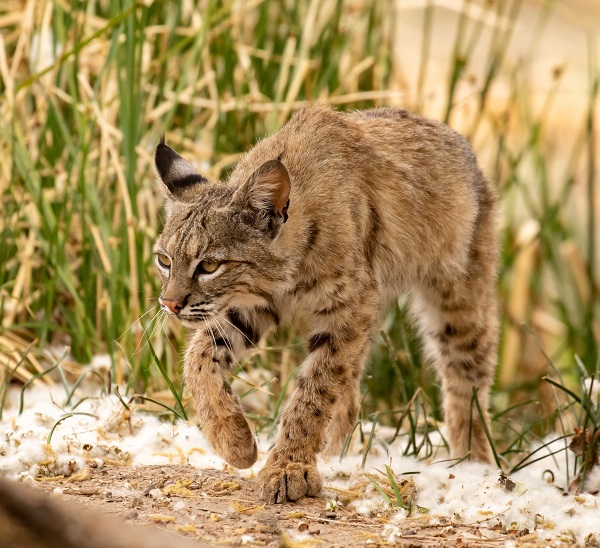
The bobcat, scientifically known as Lynx rufus, is a captivating and elusive species that roams the wilderness of North America. Renowned for its stealth and adaptability, this charismatic feline holds a unique place in the continent’s ecosystems. In this article, we will explore the native territory, average size and length of life, and the crucial role that bobcats play in maintaining the ecological balance of their habitats.
Native Territory
Bobcats are native to North America, where they are found throughout the United States, Canada, and parts of Mexico. Their distribution is incredibly vast, as they inhabit a variety of ecosystems ranging from dense forests and swamps to arid deserts and mountainous regions. This adaptability is a testament to the bobcat’s remarkable ability to thrive in diverse environments.
Average Size and Length of Life
Bobcats are medium-sized felids, typically measuring between 28 to 40 inches in length from the tip of their nose to the base of their short, stubby tail. They stand about 18 inches tall at the shoulder and weigh anywhere from 15 to 30 pounds. These compact dimensions make them perfectly suited for stealthy hunting.
In the wild, bobcats typically live to be around 7 to 10 years old. However, this lifespan can vary due to factors such as predation, accidents, and disease. Bobcats tend to have a lower mortality rate in areas with less human interference, where they face fewer threats.
Role in the Environment
Bobcats are apex predators in their ecosystems, playing a vital role in controlling prey populations. Their diet primarily consists of small mammals like rabbits, squirrels, and rodents, which can have a significant impact on local ecosystems if left unchecked. By regulating these populations, bobcats help maintain the balance within their ecosystems.
Furthermore, bobcats’ presence in an area can have cascading effects on the entire food web. Their predation can influence the behavior and distribution of smaller mammals, which in turn affects vegetation and even bird populations. Essentially, bobcats help shape the overall health and stability of their habitats.
Bobcats also contribute to genetic diversity within their species. They have a relatively large home range, which often overlaps with those of other bobcats. This overlapping territory promotes genetic mixing and prevents inbreeding, thereby enhancing the overall genetic health of the population.
Conclusion
The bobcat, native to North America, represents a remarkable and integral component of the continent’s ecosystems. These stealthy and adaptable predators help maintain the ecological balance by controlling prey populations and influencing the behavior of other species within their habitats.
Related Articles & Free Email Newsletter Sign Up
The American Muskrat is Nature’s Aquatic Engineer
Timber Rattlesnakes are Masters of their Forested Habitat
Unveiling the Majesty of the Northwestern Wolf: Habitat, Range, and Remarkable Specimens




Comment here